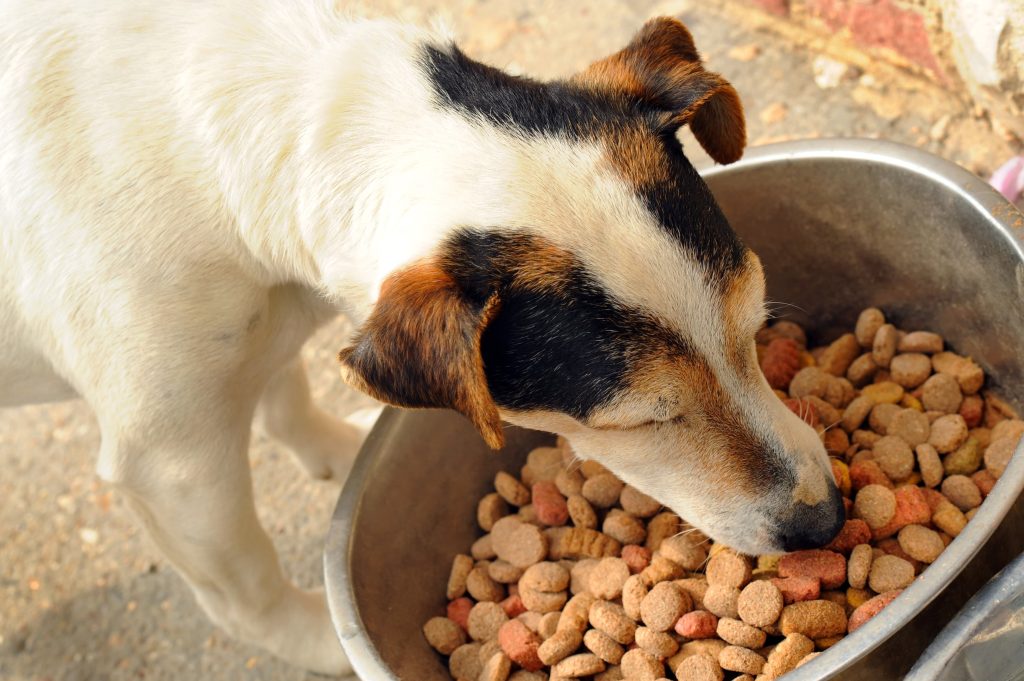How to Identify Food Allergies in Dogs and Cats and Adjust Their Diet

Identifying Food Allergies in Pets
Every pet owner wants to ensure their furry friends live a healthy life. However, food allergies in dogs and cats can often go unnoticed, leading to discomfort and various health issues. When pets experience food allergies, their immune system mistakenly identifies harmless substances as threats. This misidentification can result in unpleasant symptoms that can seriously affect their quality of life.
Recognizing the signs of these allergies is crucial for early intervention. Look out for symptoms such as:
- Itchy skin or rashes: This is often one of the most visible signs of a food allergy. Pets may scratch, bite, or lick their skin excessively, leading to hair loss and skin infections.
- Digestive problems: Allergic reactions can disrupt the digestive system, causing symptoms like vomiting or diarrhea, which may be intermittent or chronic. This can lead to further complications if not addressed.
- Ear infections or paw licking: Frequent ear infections, redness in the ears, and constant paw licking are not just signs of unhygienic conditions but can also indicate underlying food allergies.
In Nigeria, pet owners face the challenge of a wide variety of local and imported pet foods, which can complicate the identification of allergies. Factors such as the availability of certain ingredients and the quality of commercial pet feeds can also affect your pet’s health. Being attentive to changes in your pet’s behavior or health is essential; keep a record of their diet along with any symptoms that arise after feeding.
Once identified, appropriate dietary adjustments can improve your pet’s well-being significantly. Here are some effective tips for managing food allergies:
- Switching to hypoallergenic food: These specially formulated foods contain proteins and carbohydrates that are less likely to trigger allergic reactions.
- Avoiding common allergens: Ingredients such as chicken, beef, soy, and dairy are frequent culprits when it comes to pet food allergies. Transitioning to a different protein source can be beneficial.
- Introducing novel proteins: Options like fish or kangaroo, particularly those designed for pets with food sensitivities, should be introduced gradually to allow you to monitor your pet’s response.
Learning how to properly address food allergies can transform your pet’s quality of life. Understanding these allergies allows for better choices in your pet’s diet and overall health. Consider consulting with a veterinarian who can help identify allergies through elimination diets and other diagnostic tools. Not only does this knowledge enhance your pet’s health, but it also fosters a deeper bond as you become more attuned to their nutrition and needs. Ultimately, being proactive about pet food allergies facilitates a happier, healthier life for your beloved animal companions.

LEARN MORE: This related article may interest you
Understanding Food Allergy Symptoms in Pets
Identifying food allergies in dogs and cats may not always be straightforward, as symptoms can manifest in various ways, sometimes mimicking other health issues. By learning to recognize these symptoms, pet owners can take proactive measures to adjust their pets’ diets effectively.
The challenge lies in the fact that pets cannot communicate their discomfort, leaving pet owners to decipher the signs. Observing your furry friend closely can provide crucial insights into their dietary reactions. Some of the most common symptoms to look out for include:
- Gastrointestinal distress: If your pet experiences frequent vomiting or diarrhea after meals, it may indicate a sensitivity to certain ingredients. This can disrupt their overall health and lead to further complications if not properly managed.
- Skin irritations: Rash, redness, or inflamed skin are telltale indicators of a potential food allergy. Watch for excessive scratching or biting that can result from the discomfort of allergic reactions.
- Behavioral changes: If your pet becomes unusually irritable or lethargic, it might be a response to dietary intolerances. Changes in energy levels can be a significant hint toward underlying allergies.
- Paw chewing and ear problems: Persistent chewing at their paws or recurrent ear infections can signal food allergies, indicating an internal response rather than external factors.
In countries like Nigeria, where pet food options vary widely—from local formulations to international brands—understanding which ingredients may cause adverse reactions is crucial. It is sometimes difficult to pinpoint the exact cause, especially with commercial diets that often contain diverse ingredients. Pet owners are advised to maintain a detailed food diary for their pets. This should include all food and treats given, alongside any observed symptoms, in order to identify potential allergens accurately.
Once symptoms suggest a food allergy, the next step is crucial: a consultation with a veterinarian. They can conduct necessary tests and recommend an elimination diet, which is essential for confirming the suspected allergy. An elimination diet typically involves offering a single protein and a single carbohydrate source for a fixed period while carefully monitoring your pet’s response.
This process of detection and adjustment is vital for ensuring your pet’s comfort and health. Redirecting their diet may involve switching to hypoallergenic dog or cat food, specifically designed for pets with food sensitivities. These formulations often utilize novel proteins and carbohydrates that are less likely to provoke allergic reactions.
By being observant and proactive, pet owners in Nigeria can navigate the diverse pet food landscape more efficiently, understanding how their choices affect their furry companions. With the right strategies in place, it is possible not only to identify food allergies but also to create a diet tailored to support the long-term health and happiness of dogs and cats alike.
Identifying food allergies in our furry companions, such as dogs and cats, can often feel like solving a complex puzzle. The first step is to monitor their symptoms. Common signs include skin irritations, excessive scratching, gastrointestinal issues like vomiting or diarrhea, and changes in behavior. Keep a detailed record of your pet’s food intake alongside any symptoms that arise. This will help you to pinpoint potential triggers.
Another effective method is to conduct a food elimination trial. This process involves feeding your pet a single, new protein source and a limited ingredient diet for a period of 8-12 weeks. During this time, it’s essential to avoid treats or table scraps to prevent any cross-contamination. After the trial, gradually reintroduce previous foods one at a time, watching closely for any allergic reactions. This controlled method offers valuable insights into which ingredients may be problematic for your pet.
Consulting a veterinarian is crucial, as they can perform tests to confirm allergies. Blood tests and skin prick tests can provide definitive answers, ensuring you adjust your pet’s diet accurately. In some cases, the veterinarian may recommend hypoallergenic diets specifically formulated for pets with sensitivities.
Once you’ve identified the allergenic foods, it’s time to adjust their diet. Opt for high-quality pet food that caters to their specific needs. Look for options with limited ingredients or novel protein sources, such as lamb, duck, or fish, which are less likely to trigger allergies. Additionally, adding supplements such as omega-3 fatty acids can help with skin health and overall well-being.
By combining careful monitoring, dietary adjustments, and veterinary guidance, you can significantly improve your pet’s quality of life. Armed with this knowledge, pet owners can take proactive steps to ensure their furry friends enjoy a healthier, allergy-free lifestyle.
| Category | Details |
|---|---|
| Identifying Symptoms | Look for disturbances such as scratching, skin irritation, or digestive issues. |
| Food Elimination Trial | Feed a single protein over 8-12 weeks to pinpoint food allergies. |
| Veterinary Assistance | Seek tests like blood or skin prick tests for confirmation of allergies. |
| Diet Adjustment | Introduce high-quality, novel protein diets to cater to allergies. |
SEE ALSO: Click here to read another article
Implementing Dietary Changes for Allergic Pets
Once pet owners identify potential food allergies in their dogs and cats, the next critical phase involves implementing dietary changes that can alleviate symptoms and improve overall health. Transitioning to a suitable diet requires careful planning and consideration, particularly given the myriad of pet foods available in Nigeria.
One popular strategy used to confirm food allergies is the elimination diet. As previously mentioned, this involves feeding your pet a simplified diet consisting of a single source of protein—such as lamb, duck, or fish—and a single carbohydrate, like sweet potato or rice. This approach allows you to monitor your pet’s reactions over a period of approximately 8 to 12 weeks. It’s essential to avoid any treats, other food items, or even flavored medications during this period to ensure accurate results.
For pet owners in Nigeria, sourcing limited-ingredient diets can be challenging due to the fluctuating availability of various food brands. Nevertheless, many stores now offer hypoallergenic dog and cat foods formulated specifically for sensitive pets. Pets with food allergies can often benefit from switching to these diets, as they contain alternative proteins and carbohydrates that are less likely to cause allergic reactions.
Another viable option is to consider home-cooked meals tailored to meet the nutritional needs of your pet while avoiding known allergens. Consultation with a veterinarian or a pet nutritionist can provide insight into the right balance of ingredients to ensure a well-rounded diet. Homemade recipes can incorporate lean meats, fresh vegetables, and healthy grains as alternatives to common allergens. However, this approach requires diligence to maintain proper nutrition and prevent deficiencies.
- Monitor Changes: After initiating the elimination diet, watch for improvements or any lingering symptoms. Significant signs of improvement can indicate a successful identification of allergens, reinforcing the need to maintain these dietary restrictions.
- Gradual Reintroduction: If you feel confident that a food allergy has been successfully identified, consider a gradual reintroduction of certain foods. This should be done one ingredient at a time to pinpoint any negative reactions.
- Be Cautious with Treats: Treats often contain hidden allergens. Opt for single-ingredient treats or those labeled hypoallergenic to prevent any setbacks during this crucial period.
Understanding the nutritional needs of pets is especially significant in countries with diverse ingredients like Nigeria. The economic aspects also come into play: commercial hypoallergenic diets may be pricier than regular options. Investing in these specialized diets can save on vet bills in the long run. Training your pet to enjoy new flavors and textures might take time, but introducing gradually mixed meals can help ease this transition.
As food allergies can vary between individual pets, customization is key. This means keeping an ongoing dialogue with your veterinarian about your pet’s progress and any necessary adjustments. A veterinarian can recommend suitable brands or even provide specific recipes for home-cooked meals tailored to your pet’s unique needs.
In conclusion, while identifying food allergies can be a journey fraught with challenges, with careful monitoring, decisive dietary adjustments, and professional guidance, pet owners can ensure their beloved dogs and cats lead healthy, contented lives. Understanding and adapting to their nutritional needs is not just a responsibility; it’s an act of love that nurtures both physical health and emotional well-being.
CHECK OUT: Click here to explore more
Conclusion
Identifying and managing food allergies in dogs and cats is a vital aspect of ensuring their long-term health and happiness. The journey begins with keen observation and understanding of your pet’s behaviors and reactions to certain foods. Comprehensive steps such as keeping a food diary, noticing the symptoms, and consulting a veterinarian can lead to the discovery of allergies that, if left unaddressed, could severely impact your pet’s quality of life.
Once potential allergens are identified, implementing dietary changes through elimination diets or switching to hypoallergenic options becomes crucial. This process may seem daunting, especially in places like Nigeria where some specialty pet foods may not be readily available. However, it opens doors to new dietary options, including homemade meals tailored to specifically meet your pet’s nutritional needs while avoiding allergens.
Regular monitoring of your pet’s health, adaptability in dietary plans, and communication with a veterinarian remain cornerstones in this endeavor. These practices not only help pinpoint allergens but also refine dietary regimens ensuring they fulfill their nutritional requirements without triggers. Remember, food allergies vary from one pet to another, emphasizing the necessity for personalized approaches.
In conclusion, being proactive and informed about your pet’s dietary needs extends beyond merely managing allergies. It is an ongoing commitment leading to healthier, happier lives for your furry companions. By investing time and care into understanding and adjusting their diets, you fortify the bond you share while nurturing their overall well-being. Your pet’s health is in your hands—make it count.



